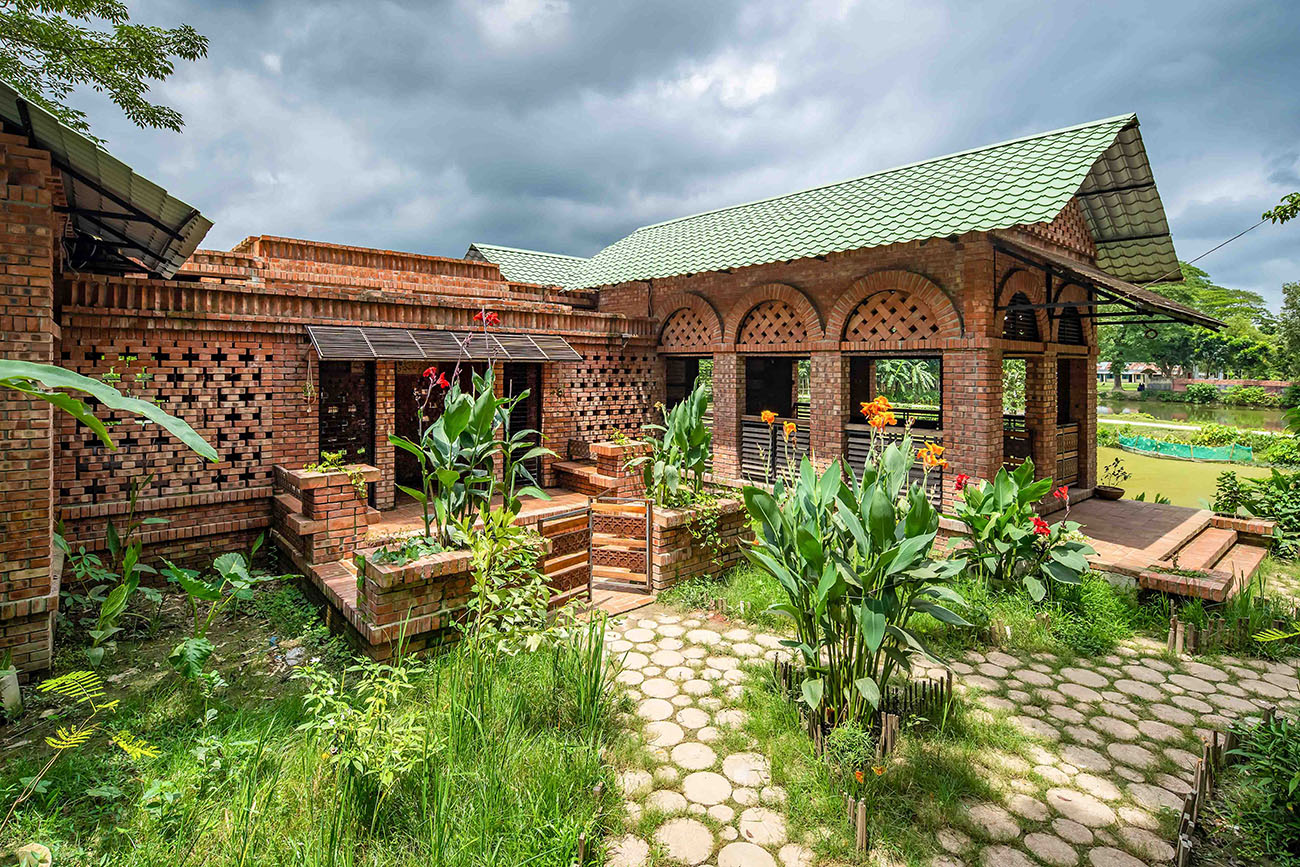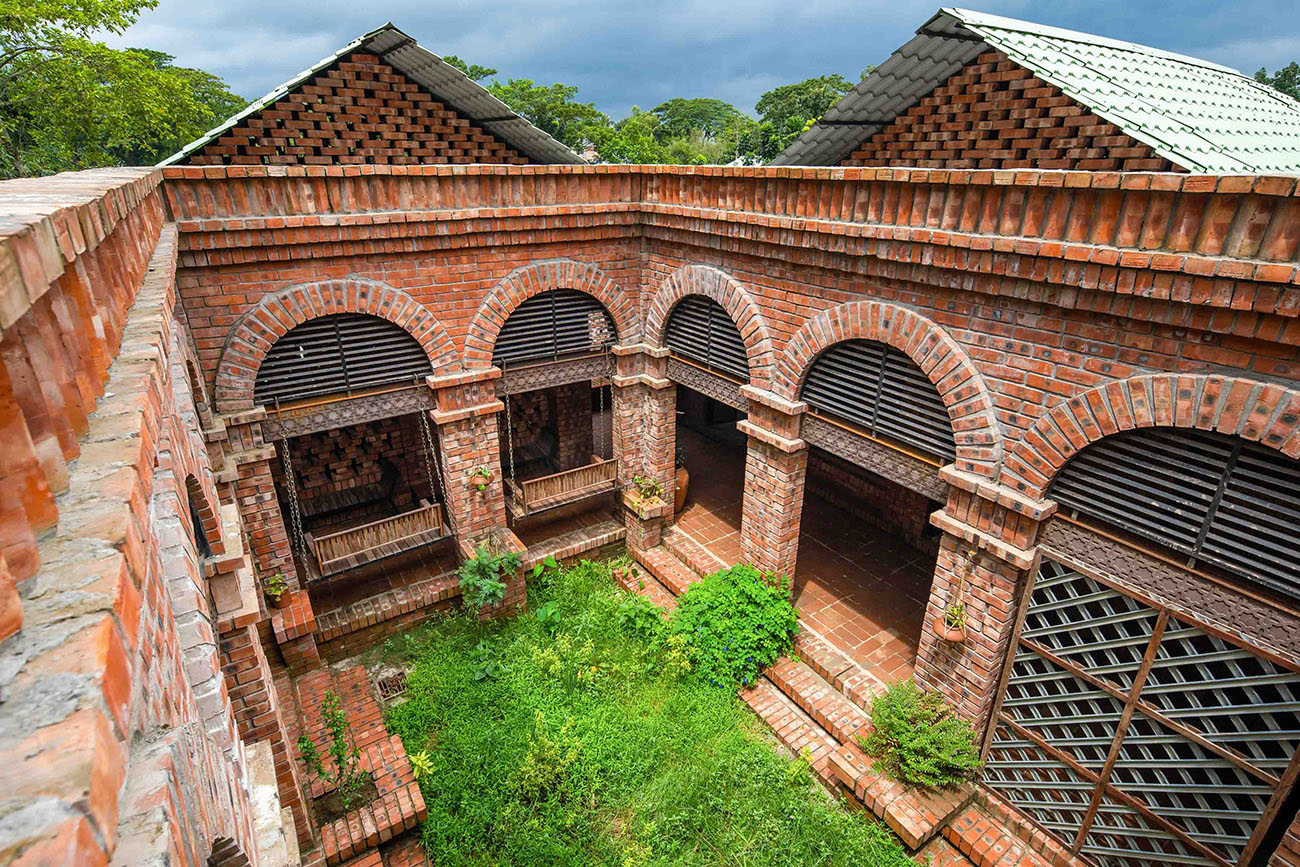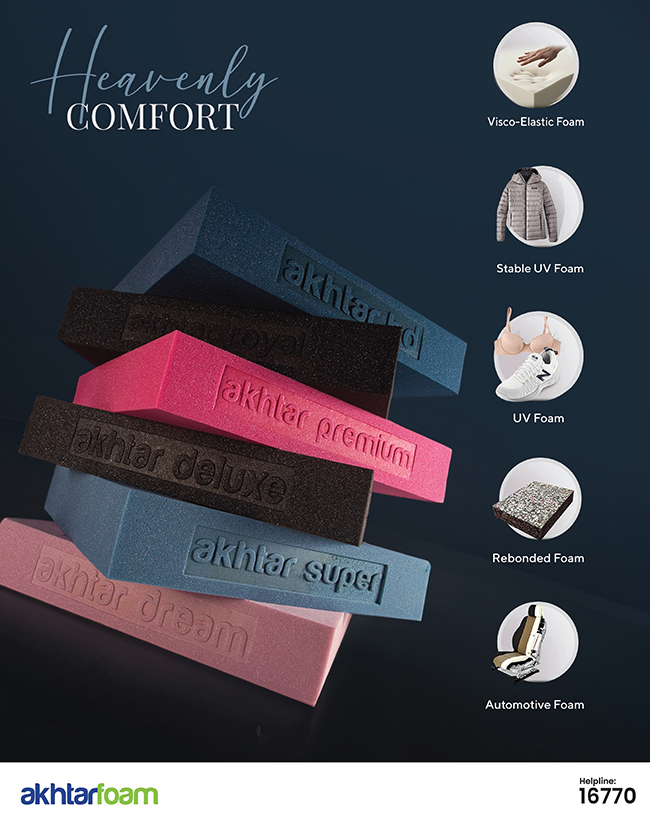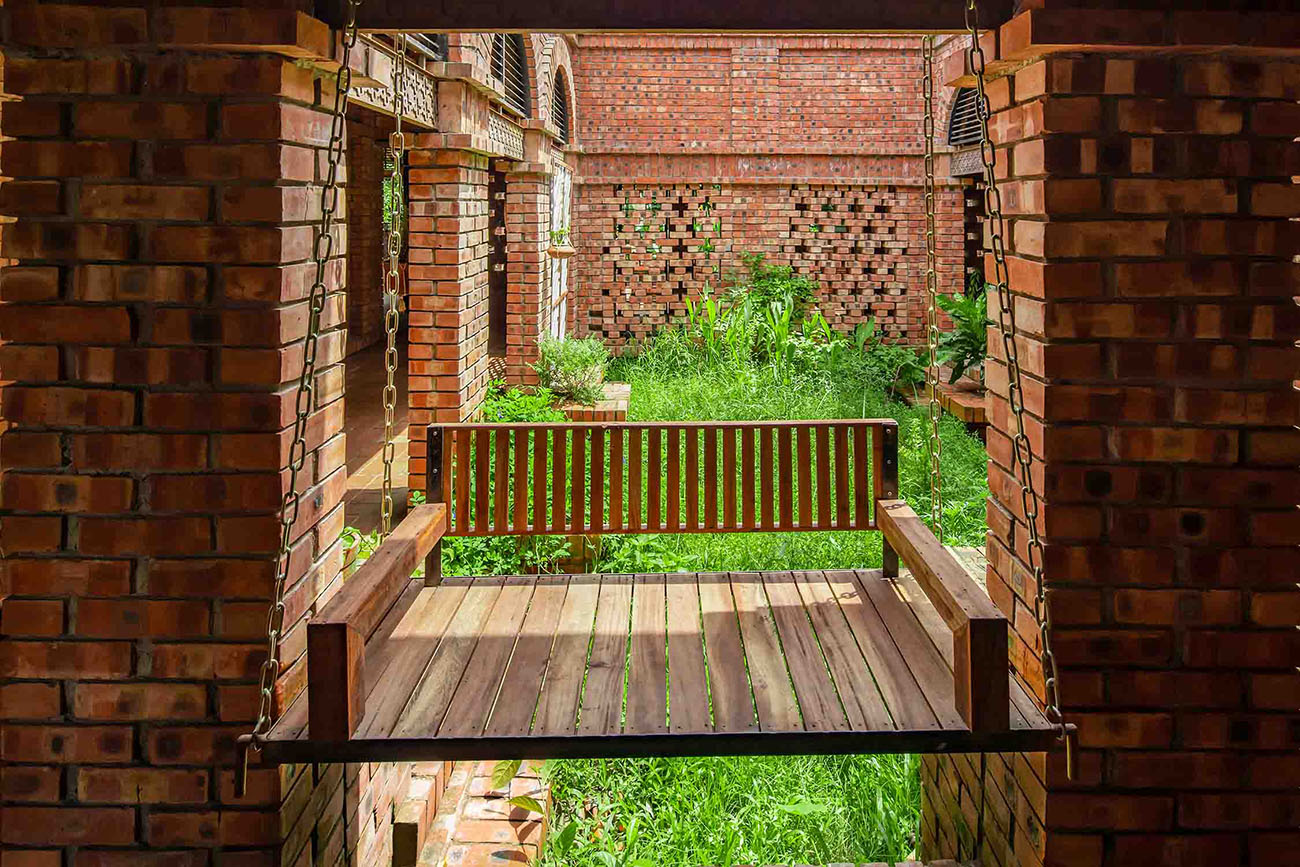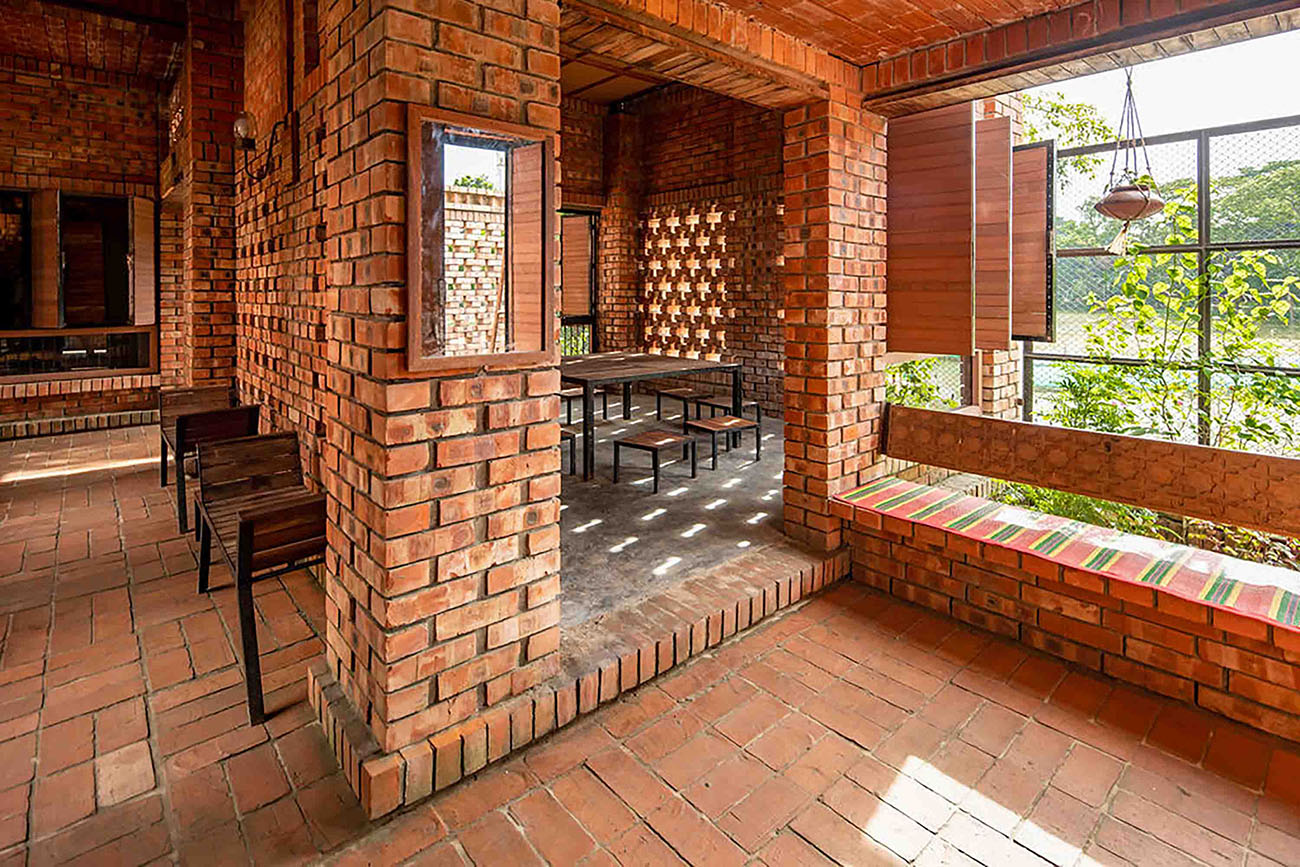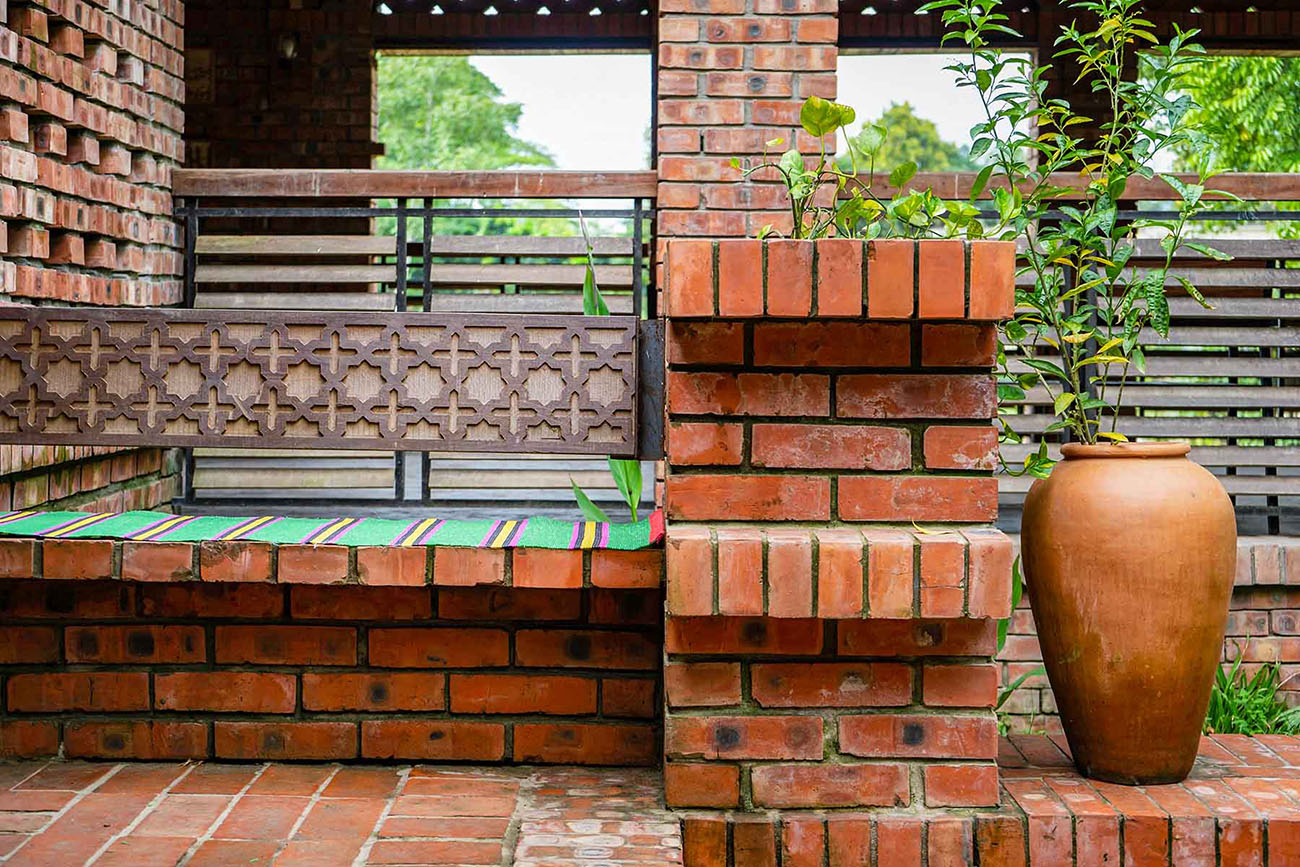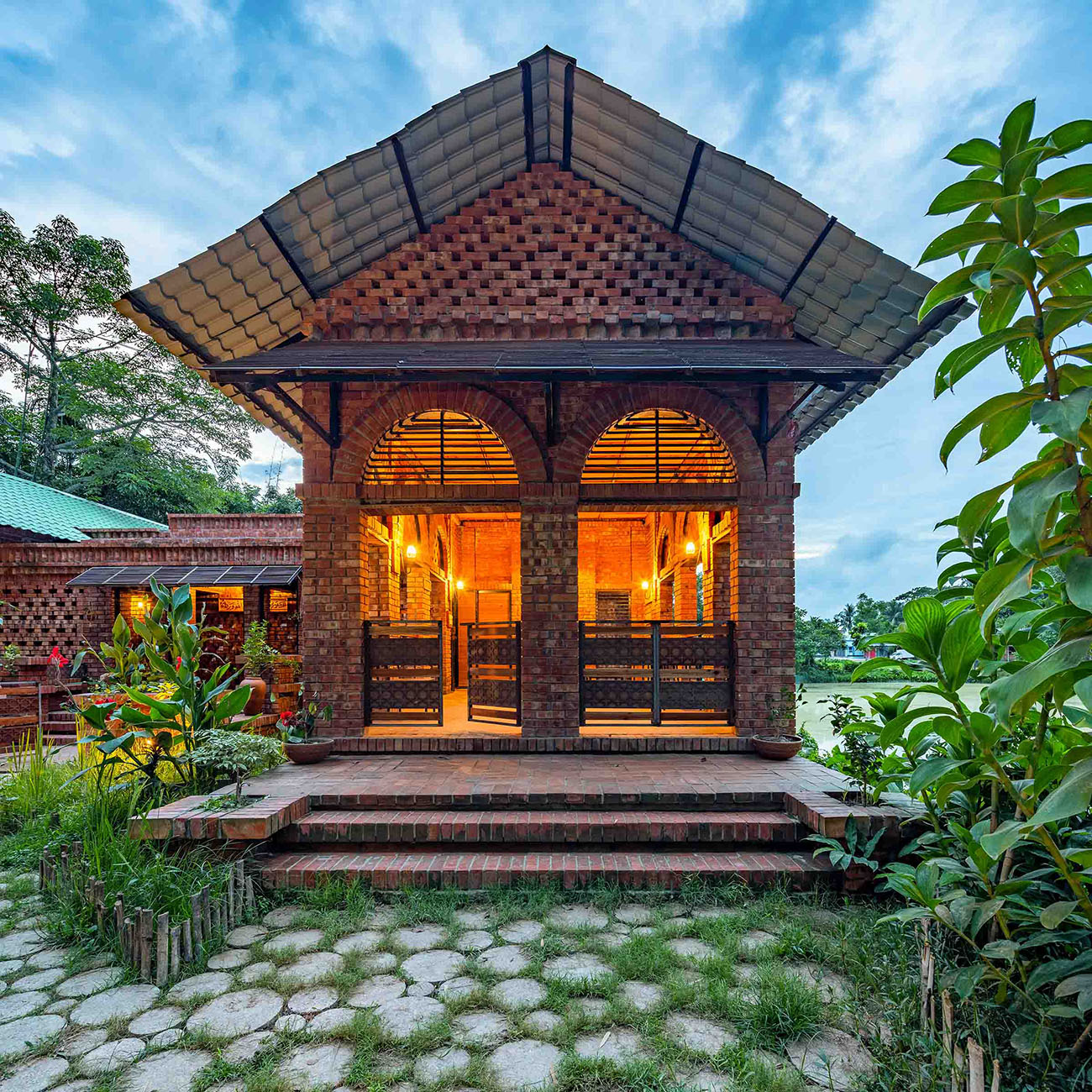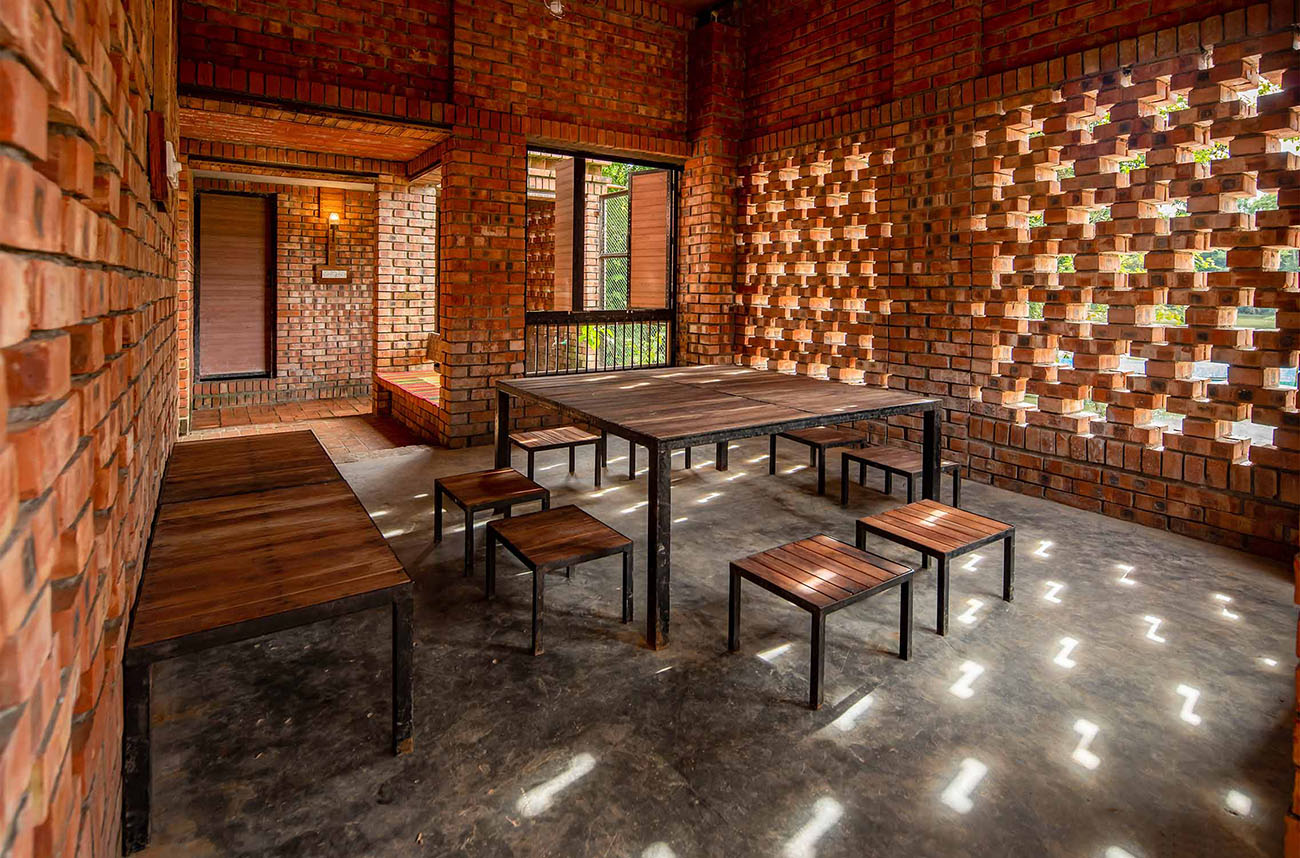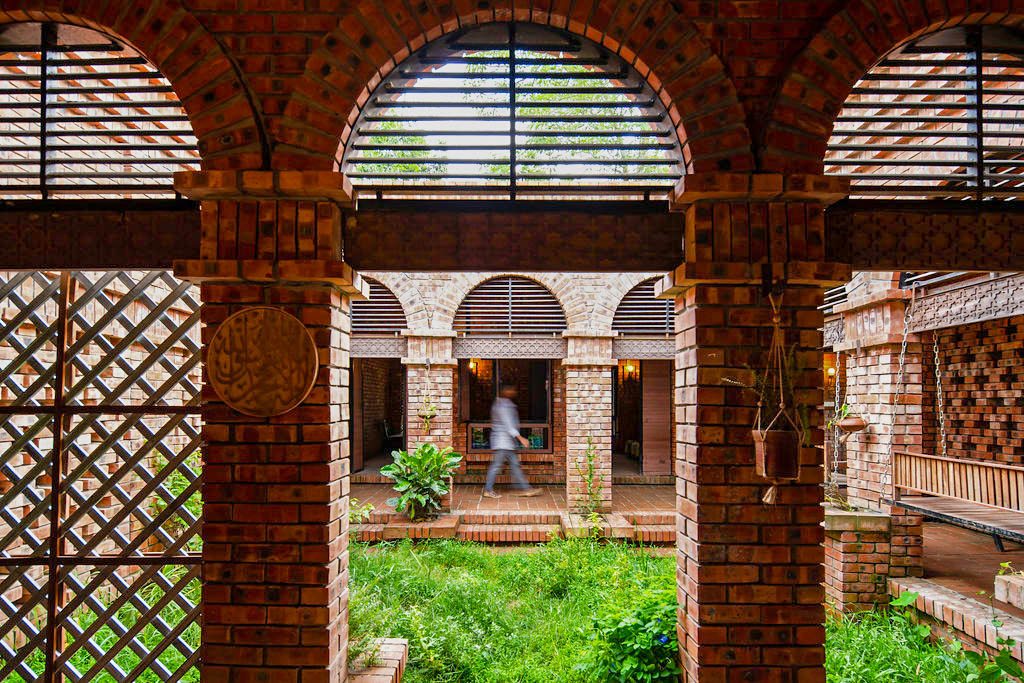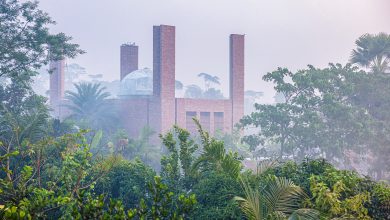A Restorative Paradigm – A Khanka for a Fakir
Khanka is a spiritual place where Islamic religious masters pray and meet his followers. This spiritual place is built for a Fakir (a Muslim saint) in Goforgaon, Mymensingh, designed by Archeground Ltd. All the design choices are based on a conceptual and constructive restraint, which avoids any monumental approach unsuited to the place and its context, and rather emphasizes the characters of solidarity and hospitality.
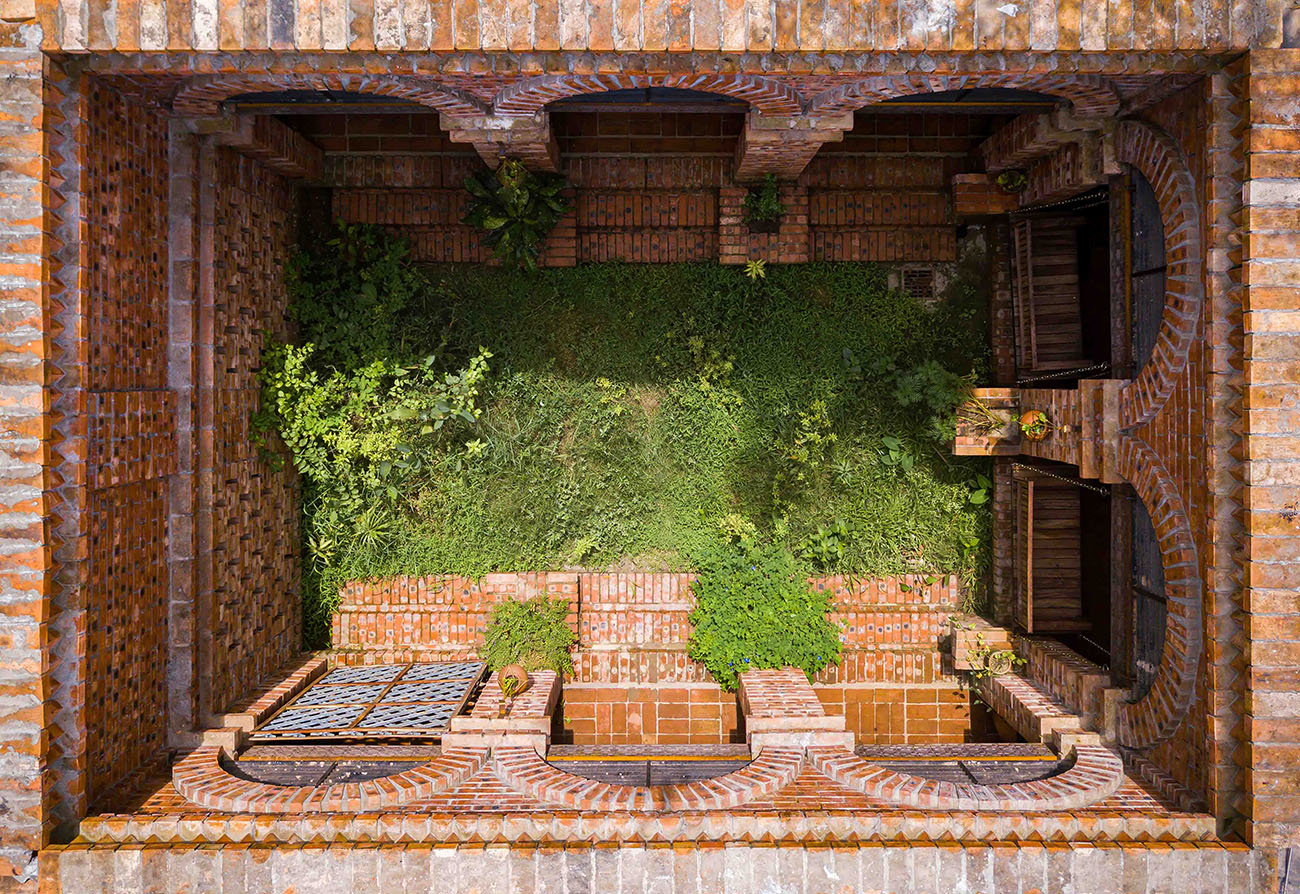
The project has a story behind its establishment. In a Mazar (shrine), A.K.M Shamim Osman, the client of the project, met a Fakir. Gradually he became his follower and decided to build a Khanka with accommodation for the Fakir. The project resides at the road level in the east side while the north and west sides are enclosed with paddy fields which turn into shallow water basin during the rainy seasons. To outpace this complexity in the site, the design team had to retain the edges with plantations. Spanning 360 square-meter built areas, the design emerged from zoning the main programs – a home, a public prayer space dedicated to meeting the followers, and an advanced grave for the master. The main challenge of the design was creating a public function area in a conservative Muslim family.
The final layout is divided into three conceptual axes – ‘Live’, ‘Pray’ and ‘Leave’. ‘Live’ denotes the entrance of the home; ‘Pray’ denotes the prayer space, and ‘Leave’ resembles the grave.
The project is an attempt to create a low-cost traditional ‘Bangla Ghar’ with rural architectural characteristics such as the pitched roof and courtyards. The project houses two courtyards, an outer courtyard for public and an inner courtyard for family members who wanted controlled privacy. The inner courtyard as well functions as cross-ventilation, achieving high energy-efficiency and maintenance. An outdoor kitchen courtyard was created in the north-west corner with brick jali (perforated) walls, and toilet zone is placed separate from the bedrooms, following the rural dwelling habit.
The project is entirely built-in local brick and engages local workers for constructions and detailing. For all the rooms and prayer space, pitch roof is made with metal frame and industrial sheet, but the corridor roof around the inner courtyard is made of reinforced brick. One interesting construction feature is the sandwich ceiling panel made of metal frame, coconut fibre and Ferro cement. For floor-finish, brick flooring is given in circulation areas and NCF for all rooms and prayer space. Interior is kept bare with minimum furniture made of metal frame and mahogany wood. “When designing the project, I thought about making use of the materials that would nobly blend in the environment. My purpose was to intervene as little as possible”, says Lutfullahil Majid, principal architect of Archeground Ltd.
“As a Khanka instead of being an iconic structure, considering the rural context we tried to make a simple traditional village house which will not dominate the surrounding nature and the other villagers’ houses. The plan was to design a place of cult and retreat’.
The brick crafted arch enhanced with metal, the brick jali walls, the Islamic pattern calligraphy in brick details and crafted wood m – all amalgamates conveying the splendid Islamic semblance. The Khanka has become a landmark and holy structure for the villagers and the local people who like to symbolize this place as ‘Fakir Bari’.
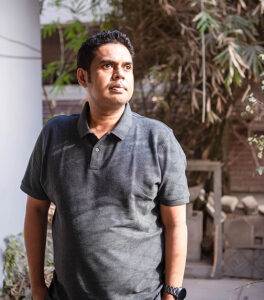
Architect profile
Architect Lutfullahil Majid is the principal architect of Archeground Ltd. The Archeground team has expanded over the years and has created a wide range of successful projects. The firm inclines towards unconventional and experimental works and believes on collaboration, discussion and interactive association. This project – ‘A Khaka for a Fakir’ involves its team of architects: Ar. Jubair Hasan, Ar. Nabi Newaz Khan Shomin, Ar. Md. Hasib Mahmud Tipu, Structure Engr. Mosharraf Hossain and Site Engr. Nurul Islam. The team greatly emphasizes environment susceptibility; cost-effectiveness, traditional and vernacular architecture in pursuit of making a better life for its people and the country.

